Plant and Garden
Information, Tips & Ideas
Deer Resistant Plants
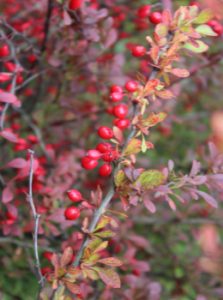
Deer Resistant Plants
Astilbe
Barberry
Birch
Birds Nest Spruce (All spruces)
Boxwood
Butterfly Bush
Daffodils
Dwarf Alberta Spruce
Pachasandra
Potentilla
Pieris Japonica
Rose of Sharon
Spirea
Viburnum
Marigolds
And lots lots more!
Visit our Nursery for your own copy of our LATEST and most complete Deer Resistant List
Plants To Avoid In Deer Country
Arborvitae
Azalea
Burning Bush
Dogwood
Euonymus Variegated
Flowering Crabapple
Frasir Fir
Hemlock
Holly
Hosta
Mountain Laurel
Purple Sandcherry
Rhododendron
Roses
Tulips
Yew
*NOTE: Please remember, no plant is “completely” deer-proof,
especially during a severe winter.
Printable Tips for Deer Resistant Plants
Vines
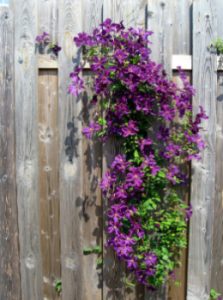
Boston Ivy (Parthenocissus Tricuspidata)
– This is a deciduous ivy that looses its leaves in the winter. They have large lobed leaves that turn bright red in the fall just before dropping. It is a very vigorous grower that gets into cracks, siding, and even windows. It sometimes is seen on large brick buildings. We do not stock this vine, but can order it for you in June. It is hardy.
Clematis
– These vines make a wonderful flowering vine. They have large purple, white, red, pink, or multiple colored flowers. We have heard many people say that they have had trouble getting clematis to grow. They require well-drained deep soil with an adequate mixture of approximately 10% peat moss mixed in with the existing garden soil 18” deep before planting. The clematis requires at least 1⁄2 day or more of good full sun;however, the roots need to be kept cool. (Plant behind bushes or provide shade over the roots.) Buy only well established clematis plants that have been grown in the pot for at least one year for best results. Most varieties can be pruned in the early spring if necessary, or after flowering. Remove the dead wood.
Climbing Honeysuckle (Loricera)
– This is a vine that grows approximately 10-20’ tall and 10’ wide. It is a hardy vine that blooms all summer long! Plant in sun to part shade. Blossoms are tube shaped in colors of red, pink, and yellow.
Climbing Hydrangea (Hydrangea anomala Petiolaris)
– This is a hardy vine that can grow to 20’ tall and 10-20’ wide over time. It can be used as a vine or a ground cover. Grows best in shade. It has rich dark green foliage on a sturdy vine with flat white hydrangea blooms in summer.
English Ivy (Hedra helix thorndale)
– The thorndale ivy we carry in the flats in the groundcover section will also climb. It is more controllable than the Boston ivy above, but it is a slow grower. It is an evergreen.
Silver Lace Vine (Polygonum aubertii)
– A vigorous vine that has white, sweet scented flowers in July-September. It is excellent for arbors, trellises, and fences. It is deciduous so it looses its leaves in the winter.
Trumpet Vine (Campsis radicans)
– They come in yellow or orange-red. It is a very vigorous vine once established. Plant in sun or part shade. The hummingbirds really go for the orange-red variety. They bloom in late summer-early fall. It may take a year or two to bloom until established.
It is hardy.
Wisteria
– This can grow to 30’ or more and can be a tree or a vine. It isn’t the easiest vine to get to flower in many locations. It is a vigorous grower. It has fragrant flowers in late May or early June. Plant in sun or part shade.
Virginia Creeper
– This is a variety of Boston ivy that flowers in late summer. We can order it in June.
Dwarf Alberta Spruce Care
Dwarf Alberta Spruce are a super dwarf evergreen for our area. They can; however, be susceptible to occasional spider mite i njuries. The injury starts out in the summer as a lighter colored patch on the evergreen and it can turn brown if not sprayed with a spider mite spray. It is available in an aerosol can, a pump bottle, or a concentrate. We recommend spraying once a year in June as a preventative measure.
They like to be trimmed each year in July, so shape by taking off the small branches that stick out.
Printable Dwarf Albert Spruce Care
Flowering Shrubs, Trees & Vines
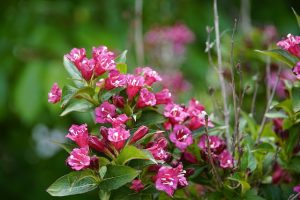
Our Favorite Flowering Shrubs, Trees, & Vines
Shrubs:
Azalea Exbury – Flowers in spring for about 2-weeks, plant in protected location out of the wind.
Azalea Evergreen – Flowers in spring for about 2-weeks, plant in a protected location, very few varieties are hardy.
*Butterfly Bush – Flowers in summer for a long period of time, gets real big, may die back in severe winters.
Dwarf Lilacs – Flowers in spring for about 2-weeks and is very fragrant.
Dwarf Rhododendron (PJM) – Flowers in early spring for about 2-weeks and is hardy.
Forsythia – Flowers in spring last for about 2-weeks. (We carry varieties that will flower here with yellow flowers.)
*Hydrangea (PG, Annabell, Tardiva, Unique) – Flowers up to 2-months in late summer.
Lilacs – Flowers in spring for about 2-weeks and are very fragrant.
Miniature Rhododendron – Flowers in spring for about 2-weeks and needs to be planted in a protected location.
Mountain Laurel – Flowers in late spring for about 2-weeks, plant in a protected location.
Pieris Japonica – Flowers in early spring for about 2-weeks. Flowers look like Lily-of-the-Valley flowers. Plant in protected location.
*Potentilla – Flowers in the summer for a long period.
Purple Leaf Sandcherry – Flowers in the spring for about 2-weeks.
*Rose of Sharon – Flowers in late summer, needs to be planted in town with a protected location.
*Roses – Protect from winter injury, plant in full sun.
*Spirea – Flowers in the summer. Shirobana flowers nearly all summer; very hardy.
Standard Rhododendron – Flowers in early spring for about 2-weeks. Does best in protected location.
Viburnum – Flowers in late spring for 2-3 weeks, need a protected area. Burkwoodi is fragrant.
Weigelia – Flowers in early summer for 2-3 weeks, needs a protected area.
Note:
Much color in the landscape can be obtained by using shrubs with “bright colored foliage” such as:
Blue Chip Juniper Gold Mound Spirea
Blue Dwarf Gold Spruce Golden Barberry (Dwarf)
Burning Bush (red in the fall) Icee Blue Juniper
Crimson Red Barberry (Dwarf & Rose Glow) Moffat Blue Juniper
Diablo Ninebark (maroon) Purple Leaf Sandcherry
Fat Albert Blue Spruce Saybrook Gold Juniper
Gold Mop Juniper Variegated Euonymus
(Gold & green, Green & white)
& many more colorful shrubs!
* This flowers for a long period of time.
Pleasant Valley Greenhouses & Nursery Flowering Plants
Flowering Vines:
*Clematis Vines – Flowers in the summer. Plant in sun, keep roots shaded and cool.
Climbing Hydrangea Petiolaris – Flowers in summer. Plant in shade.
*Climbing Roses – Flowers in the summer for over 1-2 months.
Silver Lace Vine – Has white flowers in late summer. Available in June.
*Trumpet Vines – Flowers in late summer for over 1-month. Plant in sun.
Wisteria Vines – Tricky to get to flower in our area.
Flowering Perennials:
See “Our Favorite Perennial” list.
Flowering Trees:
All fruit trees – Flowers in early spring for 7-10 days.
**Flowering Crabapple Trees – Flowers in early spring.
**Flowering Pear Trees – Flowers in early spring. (No fruit)
**Hydrangea – Flowers in the summer for a long period of time.
Lilac – Flowers in the spring and area fragrant. Iv ory Silk has white flowers in the
summer, but they aren’t fragrant.
Magnolia – Flowers in early spring. Large pink and white flowers can be hurt by spring
frosts. Plant in a protected location.
**Purple Leaf Sandcherry – Has white flowers for one week in the spring.
Redbud – Flowers in early spring. Cold hardy, but doesn’t take stress well.
Rose of Sharon (Hibiscus) – Flowers for over one month in late summer. Needs a
protected location in town.
**Weeping Cherry – White variety flowers dependably in our area and is the best choice.
The pink variety does not flower most years and is not as hardy.
* This flowers for a long period of time.
**This is one of our favorites for this time of year.
Printable Tips for Flowering Shrubs, Trees & Vines
Groundcovers
Groundcovers for sun and dry soil:
Sedum – Spreading varieties (there are many!)
Hens n’Chicks – There are many varieties.
Groundcovers for sun and good soil:
Aegopodium – (Bishops Weed) Green leaves with white edges. Spreads very well.
Ajuga – Low, tricolor, or maroon leaves with 4” purple flower spikes in summer. This is a low spreading “mat” that tolerates poorer soil, plant in sun to part shade. It is a perennial, so it dies back in the winter.
Cerastium – (Snow in the Summer) Silvery foliage and white flowers in May and June.
Cotoneaster Apiculato – A semi-evergreen spreading groundcover can be 2’ high and 3-6’ wide. This does best in good, well-drained soil. Attractive red berries in late summer to fall. Plant in sun to part shade.
Creeping Phlox – Low mat with bright flowers in early spring. It likes good soil.
Crown Vetch – Crown Vetch is a clover like groundcover that is planted by seed. It needs to be planted by early May in order to take. It can be seeded over existing grass or weeds. It is a good choice for steep, rocky banks where other groundcovers will not grow. It grows approximately 18” tall and has round pinkish flowers similar to clover.
English “Thorndale” Ivy – This medium leaf version of English Ivy is the hardiest and the best variety in our area. It spreads and climbs, evergreen variety. May die back in severe winters where exposed.
Euonymus ‘Coloratus’ – (Purple leaf wintercreeper). It is a low growing, vigorous evergreen groundcover with dark green, thick leaves that turn purplish in winter. not be a good choice out in the country where rabbits could damage it in the winter.
Plant in full sun to part shade.
Groundcover Roses – For a sunny area, these can’t be beat! Very disease resistant, spreads, and they flower from June-October.
Irish Moss – This low growing perennial can be used in-between rocks, where moisture is adequate. It can be used in rock gardens or in-between stone walkways.
Lamium – Variegated heart shaped leaves with white, pink, or purple flowers. It spreads very well.
Myrtle, Vinca, Periwinkle – Waxy green small leaves with light purple flowers. This spreads very well. This is a great groundcover for sun or shade, but is needs good, well-drained moist soil to do best.
Spreading Juniper – Blue chip, blue rug, and other spreading junipers can be used as groundcovers in sunny areas. Plant approximately 5’ apart after covering the ground with landscape fabric. After planting, mulch for best results.
Spreading Sedum – Sedum makes a good groundcover for a sunny, dry area. It comes in many low growing varieties with yellow, red, or pink flowers. It is a perennial so it dies back in the winter.
Thyme – Thyme is a low growing perennial that likes a sunny, well-drained location. It is a good choice for growing in-between stones in a walkway. Mother of thyme is hardier than wolly thyme.
Groundcovers for the shade:
Astilbe – This is another perennial that can make a groundcover in a shady, cool, moist area. There are many varieties from low groundcovers that only get 4” tall to 2’ tall. The flowers are red, pink, white, lavender, and purple.
English “Thorndale” Ivy – This medium leaf version of English Ivy is the hardies and the best variety in our area. It spreads and climbs, evergreen variety. This can be plantedIt comes inin part-shade to full shade. May die back in severe winters where exposed.
Hardy Ferns – Many of the hardy perennial ferns make good groundcovers for shady, cool, moist areas.
Hosta – A very tough perennial that makes a great groundcover in shady and part shadeIt comes in areas. They need a moist, shady, well-drained location to de best. Hostas come in manycolors, shapes, and sizes. Some very interesting and bright colors can liven up a shady area. Some varieties can grow 3’ around. The Francee variety will grow in sun if the soil is moist enough.
Lamium – Variegated heart shaped leaves with white, pink, or purple flowers. It spreads very well. Can tolerate “light” shade.
Lily-of-the-Valley – A low growing perennial with very fragrant, white bell shaped flowers in the spring. They need a moist, shady area.
Myrtle, Vinca, Periwinkle – This is a great groundcover for sun or shade, but it needs good, well-drained moist soil to do best.
Pachasandra – Pachasandra is a hardy evergreen groundcover that does well in moist, shady locations. It fills in well and is hardy.
Purple Leaf Wintercreeper – (Euonymus coloratus) A very hardy spreading groundcover with green leaves that turn purplish in winter. Can tolerate shady, dry areas.
Recommended spacing for ground covers:
Rooted cuttings should be spaced 6”-12” apart.
3” pots should be spaced 1’ apart.
1 gallon pots should be spaced 2’ apart.
Printable Tips for Groundcovers
Hanging Basket Care
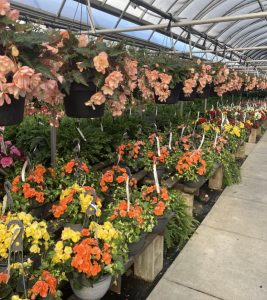
Our Olean, New York weather permits us to start thinking about putting hanging baskets outside around Mothers’ Day, which is near May 10th every year. However, the chance for cold injury and frost kill on the hanging baskets is still great until approximately June 5th.
The best way to treat a hanging basket purchased in May is to hang it outside on the nice days, and bring it inside at night when it will be below 45°. Flowering hanging baskets will not survive in the house for a month; they need to go outside on the nice days. Be careful not to over water in cold, rainy periods.
WATER GUIDELINES
Hanging baskets are similar to people in their water requirements. On the hot, sunny, dry days they need a lot of water; in cool, wet weather they need less. We suggest most of the summer when the weather is hot & dry that most hanging baskets get watered once a day – until the water starts to come out the bottom of the basket. If it has been cold and rainy, check to see if the plant is dry before watering. If the soil is quite wet leave it until it starts to dry out. Another good way to check a hanging basket for dryness is to lift it up. If it is heavy it’s probably wet, if it’s light it’s dry.
Watering first thing in the morning is best. If watering in the evening fits your schedule better, use care not to get water on the foliage. Be careful, only water the soil because foliage diseases can develop if the foliage stays wet all night.
FERTILIZATION GUIDELINES
In order to keep your hanging basket lush and growing all summer it will need fertilizer. Constant watering leeches out fertilizer in hanging baskets. Miracle Gro is an excellent fertilizer, but many people don’t have time to mix it up and apply it once or twice a week. An easier way is to use the small Miracle Gro fertilizer spikes that you push into the soil, since they last about three weeks to a month. Another good product is Osmocote, a time-release fertilizer. This can be applied to the soil and will last about a month in the summer.
Begonias and Impatiens are lighter feeders; they don’t need as much fertilizer. Geraniums and petunias are heavy feeders; they need more fertilizer to do well.
SUN or SHADE?
Hanging baskets exposed to full, hot sun all day need extra attention to watering and lots of fertilizer. Zonal geraniums and petunias are the best choices for full hot all-day sun. Portulaca is also good. Mixed hanging baskets with geraniums and petunias as the primary flowers should also do well. Moss baskets will do better if they get ½ day of shade or filtered sun. They tend to dry out quickly in full sun.
We have made up the following list of hanging baskets and grouped them from full sun to shade.
Full Sun
- Geraniums – The standard zonal geraniums can take full sun if you give them enough water and fertilizer on a daily basis.
- Petunias – Trailing petunia hanging baskets can take full sun if you give them enough water and fertilizer on a daily basis
- Portulaca – This does well in full hot sun and may not need water every day.
- Hibiscus – This does well in full hot sun and it needs water and lots of fertilizer on a daily basis.
Half Day of Full Sun
- Verbena – The new purple and pink Topian Verbenas do great in ½ day of full sun. However, be careful because they are not forgiving. If they get very dry even once and wilt they will not come back.
- Black Eyed Susan Vine – This does great in ½ day sun, but be careful with this one because they are not forgiving. If they dry out bad even once and wilt they will not come back.
- Lantana – This does great in ½ day sun, but be careful with this one because they are not forgiving. If they dry out bad even once and wilt they will not come back.
- New Guinea “Sunshine” Impatiens – These are called “Sunshine Impatiens,” although they do best in ½ day of full, hot sun. These are a great hanging basket because they are quite forgiving and if they wilt you can water them and they will come right back. Be careful not to over water these in cool, wet weather.
- Ivy Geranium – A beautiful hanging basket that does great in ½ day of full sun. It uses a lot of water and fertilizer in hot weather. Keep the soil moist; don’t let it dry out.
- Mini Cascade Ivy Geranium – These do great in ½ day of hot sun. Keep them watered and fertilized in hot weather. They are quite forgiving if you forget to water them. We recommend removing the old flower stalks very two weeks.
- “Million Bells” Miniature Petunia – A super new hanging basket! It likes ½ day of full sun. It keeps growing and getting a fuller globe shape as the summer continues. They are very forgiving if you forget to water them once in a while. They don’t make a mess below and they like a lot of water and fertilizer.
- Scavolia, Fan Flower / “Blue Wonder” – A super new hanging basket! It likes ½ day of full sun. It keeps growing and getting a fuller globe shape as the summer continues. They are very forgiving if you forget to water them once in a while. They don’t make a mess below and they like a lot of water and fertilizer.
- Snowflake “Bacopa” – Tiny white flowers cover this newer variety. Does great in ½ day of sun. It is very popular. Be careful not to let them dry out, they are not super forgiving and do not come back well after they dry out bad enough. They don’t make a mess below.
- Chenille “Foxtail” – Red, fuzzy bottlebrush type flowers hang from this plant. It needs ½ day of sun to do well. Keep the soil moist; they do not tolerate drying out well.
- Lobelia – Small, blue flowers cover this trailing vine. They do well with ½ day of full sun. Be careful because this plant does not tolerate drying out. If it dries out badly once, it will not come back.
- Argyranthemum – These super newer varieties of white or yellow daisy-type flowers are beautiful and flower all summer until fall. They are well suited to planting in the ground, also. The yellow variety gets quite tall for a hanging basket.
- Torenia – These medium-size blue flower plants do well with ½ day of full sun.
Less than Half Day of Full Sun
- Shade Impatiens – A classic hanging basket. This variety of impatiens does best if it gets ½ day of morning or late afternoon sun. Too much hot mid-day sun is not good. It is a beautiful plant that will last all summer with proper care. Fertilize it every two weeks with Miracle Gro. It does not do well in very dense shade.
- Reiger Begonia – One of the most beautiful and easiest to care for hanging baskets. It likes ½ day of sun or less. It is one of the few plants that flowers very well all summer long even in shade.
- Non-Stop Begonia – Large leaves and colorful flowers make this a popular choice. It likes morning sun or late afternoon sun. Too much hot mid-day sun is not god. Keep the leaves dry. In cool, damp late summer conditions it may need to be treated with a fungicide to prevent powdery mildew on leaves.
- Fuschia – A beautiful sight but they need special care! Fuschias like morning or late afternoon sun. Too much hot, direct mid-day sun will ruin a fushcia. They also need a good watering every day, all summer long. They are not very forgiving if they get too much sun or dries out a few too many times. They are just beautiful with the right care.
- Boston Fern – A beautiful hanging basket and easy to care for. It likes ½ day of sun or less. Give it lots of fertilizer and water and it will grow bigger and lusher as the summer goes on. If you bring it in the house for the winter, keep it in a bright window and continue to water it daily. The biggest mistake people make with Boston Ferns is not watering them enough. Misting is not really helpful.
- Double “Rosebud Impatiens” – This is a shade impatiens with “double” flowers that resemble small roses. It likes morning or late afternoon sun. Too much hot mid-day sun is not good. Be careful not to over fertilize, once every two weeks is enough.
- Streptocarpella – Small blue violet flowers and fuzzy leaves are the main characteristics of this plant. Likes ½ day of sun or less. They cannot tolerate cold temperatures; keep in the house in bright window until early June.
“Full Shade” Porches
- Non-Stop Begonia – Large leaves and colorful flowers make this a popular choice. They like morning sun or late afternoon sun. Too much hot mid-day sun is not god. Keep the leaves dry. In cool, damp late summer conditions they may need to be treated with a fungicide to prevent powdery mildew on leaves.
- Reiger Begonia – One of the most beautiful and easiest to care for hanging baskets. It likes ½ day of sun or less. It is one of the few plants that flower very well all summer long even in shade.
These houseplants make good porch hanging baskets:
- Ivy
- Spider Plants
- Pothos
- Philodendrons
Printable Hanging Basket Care Sheet
Hardy Garden Mums
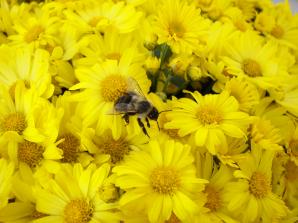
These hardy mums come in over 30 beautiful colors. They provide fall color after the annual flowers are done blooming for the year. They can withstand a frost without harm. We grow our own hardy mums; the best time to come and look is the first and second week of September. You can choose from thousands.
The first question people have about mums is will they come back up next year? Unfortunately, most mums planted in the fall in our area do not have enough time to become established before winter sets in and they do not live through the winter to come back up next year.
If you have a place in your garden where you would like to have mums growing and have them come back year after year; try planting them in the spring. That way they have all summer and early fall to become established before winter sets in. We offer hardy mums in 3” pots in the spring; you will find them near the perennials.
Hardy mums do best in a dry area in the garden that drains very well. Be sure to fertilize in the spring and again in the late summer with a granular fertilizer such as 5–10–5 or 10-10-10 etc.
Printable Tips for Garden Mums
Herb Guide
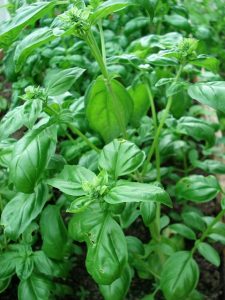
Basil (Ocimum Basilicum) – Basil is an annual with leafy stems that give it a bushy appearance. The leaves are very fragrant. Basil has several species and varieties; thus having different color leaves and flowers. Basil grows between 1-2’ tall and flowers in July and August. Plant basil in full sun and in soil that is rich, moist, and well drained. It has to be trimmed regularly to keep it bushy.
- Culinary Uses: Basil has a rich and spicy, mildly peppery flavor with a trace of mint and clove. It is used in tomato sauce and pesto; it is superb with fish, poultry, white beans, pasta, rice, tomatoes, cheese, and eggs. It blends well with other herbs and adds snap to mild vegetables, soups, stews, and sauces.
- Harvesting and Storage: Cut sprigs when flower buds form and before they have opened. Basil can be harvested until the first frost. Basil is best stored in an oil, vinegar, or paste. It can also be dried and stored in tightly sealed containers.
- Garden ideas: Plant opal basil with marigolds for a striking contract. Grow sweet basil and opal basil together in a window box.
Catnip (Neputa Cataria) – A course-leaved, gray -green perennial, catnip reveals its minthood by its stem. Soft, white fuzz covers the stem and leaves. It flowers in July through September. It likes sandy, well-drained soil and plant in sun to partial shade. Catnip is a feline aphrodisiac, although it doesn’t seem to give pleasure to every cat. - Culinary uses: • Other uses: Makes a good salad ingredient in recipes that require exotic greens and sharp flavors.
Use candied catnip leaves to serve at the end of a meal, as a digestive aid or an after-dinner mint. - Harvesting and storing: dry them carefully. Gather the leaves and tops in late summer when the plant is full in bloom, and
Sort out the tough stalks, though. Store away from moisture.
Caraway (Carum Carvi) – Caraway is usually termed a biennial. Some varieties display an annual habit, flowering and going to seed in their first year of growth. It can be planted in full sun to part shade and it likes light, dry soil. It grows to about 2’ tall and flowers in the spring. It does not grow well near fennel, but it makes a good companion for peas.
- Culinary Uses: Every part of the plant is edible. The seeds are good in beef dishes, to season pork. The leaves can be added to salads, soups, and stews. The root can be treated like a parsnip. Try caraway in eggs, cheese, vegetables, rye, barley, and oats.
- Harvesting and Storing: The seeds are ripe when they turn brown. Don’t waste time cutting the stalks before the seeds fall, then tie the stalks in bundles and hang them upside down in a warm but airy room. Let the seeds drop onto a paper-lined try and let dry there for about two weeks. Store them in an airtight jar or container.
Chamomile, German (Matricaria recutita) – German chamomile is a tall, erect annual reaching 2-3 feet tall. has daisy like blossoms, feathery foliage, and a pretty apple fragrance and flavor. It flowers in late spring through late summer. It likes sandy, well-drained soil and full sun to partial shade. People with known sensitivities to ragweed, chrysanthemums, or other members of the Compositae family should be caution about drinking chamomile tea because the flowers contain pollen.
• Harvesting and Storing: German chamomile can be seeded in either the fall or spring. established, it will reseed itself if some flower heads are left unharvested. Once If you are using the herbs for teas, carefully harvest the flowers for drying when the petals begin to turn black on the disk.
Chives (Allium Schoemoprasum) – Chives are bulb plants, though the bulbs are almost too tiny to see. The hollow, green leaves and the flowering stem shoot up from the bulbs. They produce small, pale purple flowers. They flower in June and grow to a height of about 18 inches. They like to be planted in moderately rich, well-drained soil and in full sun.
• Culinary uses: Chives taste like sweet, mild onions. Chives suit every flavor except sweet. Mince them up and cook with vegetables, meats, eggs, cheese, and creamy sauces. For texture and zip, add to soups, stews, and sautés. Don’t overcook the flowers, either. They are edible and look and taste good in salads or garnish dishes with them.
• Companion Planting: It is said they help keep Japanese beetles and black spot away from roses, scab on apples, and mildew on cucurbits, so it may help to plant chives next to these plants.
• Cultivation and Storing: For some reason, chives do not dry well to be suitable in cooking. It is easiest and faster to buy small plants in the spring, rather than to start them yourself. Plant about 8 inches apart. If you leave the plants to bloom, cut them back after they have flowered and they will send up leaves again in the spring.
Coriander (Coriandrum sativum) – This is a bright green annual with slender, erect, finely grooved stems. It produces a tiny flower, white to pinkish, mauve, or reddish. It grows to 2-3 feet tall, flowers in spring or mid-to late summer, likes moderately rich, light, well-drained soil, and full sun to partial shade.
• Culinary Uses: You can use the leaves, fruits, or roots. Coriander leaves have a bold taste that combines a strong sage flavor with sharp citrus notes. Mince the leaves or use them whole as a garnish. The roots taste like the leaves, but with an added nutty flavor and are used fresh or minced. The seeds do not have a sage like flavor, just a simple taste of citrus. Use them whole or ground.
• Cultivation and Storing: Sow the seeds directly into the garden after the fear of frost has passed. Caraway, a biennial, is often interplanted with coriander because of its complimentary habit of growth. Harvest your coriander as soon as the leaves and flowers have become brown, but not before the seed has had a chance to scatter. Cut the whole plant and hang it up to dry; gathering the seed as it falls. Make sure the seeds have thoroughly dried. When harvesting the leaves, cut only the small, immature leaves for the best flavor. Only the seeds will store well if kept in closed jars.
Oregano (Origanum spp.) – Oreganos are aromatic, herbaceous perennials with erect, hairy, square stems. They flower July through September. Plant in full sun in well-drained, average soil.
• Culinary uses: It is best known for its use in tomato sauce, it has a hot, peppery flavor. It enhances cheese and egg combinations, including omelets, frittatas, quiches, and savory flans, and yeast bread, marinated vegetables, roasted bell peppers, mushrooms, roasted and stewed beef, pork, poultry, game, onions, black beans, potatoes, and shellfish. Marjoram in a greater amount can be a substitute.
• Pests and insects: Oregano is susceptible to root rot and fungal disease, and it can become infested with spider mites, aphids, or leaf miners.
• Harvesting and storing: To harvest the plant, snip springs off when the plant is only 6” high to make the plant bushier.
Rosemary (Rosmarinus officinalis) – Rosemary is a perennial evergreen shrub whose ash -colored scaly bark and green needlelike leaves give it an overall grayish green appearance. It has pale blue flowers that are ½” long. Plant rosemary in a sunny location where you want it to stay; rosemary does not transplant well.
It is very challenging to grow in containers. Well-drained soil is essential. Do not ov er-water or underwater. Mist the branches regularly.
• Culinary Uses: Its flavor harmonizes with those of poultry, fish, lamb, beef, veal, pork, and game, particularly in their roasted form. It enhances tomatoes, spinach, peas, mushrooms, squash, cheese, eggs, and lentils. Add to potato soup, eggplant soup, marinades, salad dressings, and cream sauces. You can use both the flowers and leaves for garnishing and cooking. Crush or mince the spiky leaves before sprinkling over or rubbing into foods.
• Freeze whole springs of rosemary. Frozen rosemary is stronger than fresh.
• Harvesting and storing: It is recommended that you cut 4-inch pieces from the tips of the branches, being careful not to remove more than 20% of growth at a time.
• Garden ideas: Create the spokes of an herb wheel with rosemary. Plant it in a perennial border. Lovely hedgerows can be formed with rosemary bushes.
Herb Guide Recipes
Basil (Ocimum Basilicum)
- Chef’s tips: Make basil vinegar using white vinegar and dark opal basil. Add a handful of basil when making beef stock, and to tomato or pizza sauce. To make pesto: combine 1 cup of fresh basil leaves, 3
Tbsp of pine nuts or walnuts, 3 Tbsp of grated Parmesan cheese, and 2 or 3 cloves of garlic. Puree in a food processor, adding enough olive oil to make a smooth pasted. Use with pasta, rice, fish, vegetables, or in soup. Basil’s flavor intensifies during cooking. - Aromatic: Add fresh leaves to potpourris and sachets. Lemon basil and opal basil are very fragrant and nice to add.
Catnip (Neputa Cataria)
- To make catnip tea: Simply pour boiling water over the dried herb and let it steep. Note, catnip’s flavor and aroma are very volatile; so protect the tea while it is steeping by placing a saucer on the cup.
- To make candied catnip leaves: Dip the leaves into a mixture of beaten egg white and lemon juice, sprinkle each side with sugar and let them dry for a day or so. Store th em in a tightly closed container in the refrigerator.
Caraway (Carum Carvi)
- Caraway seed can become bitter after cooking for a long time. the seeds 15 minutes before you take the pot off the stove.
- Add crushed seeds to waffle batter (1/4 tsp. for a recipe of four). When making soups or stews, try adding Sprinkle crushed seeds over popcorn. Chamomile, German (Matricaria recutita)
- To use chamomile in a facial because it is penetrating: pour boiling water over dried chamomile flowers in a large bowl, then let the steam waft over your face.
- It is used to bring golden highlights to brown hair; combined with neutral henna, it adds highlights to very dark hair.
Chives (Allium Schoemoprasum)
- Container gardening: Chives can be brought indoors to harvest all winter long. Dig up a clump in late summer and plant in a pot. Leave the container outside for several months to insure that the tops die back and the roots freeze. Then, bring it indoors and place on a sunny windowsill. Plants will sprout within a few weeks.
- Craft: They dry beautifully and make splendid additions to dried herb and flower arrangements.
- Ornamental uses: They work nicely into a variety of garden settings and are rarely bothered by pests. Plant them as a border for a flower, herb, or veg etable garden.
- Chef tips: Combine chunks of cucumber, ripe tomatoes, and feta cheese with minced fresh chives. Add a splash of olive oil and serve with crusty bread.
Coriander (Coriandrum sativum)
Aromatic: Once the fruit has fully ripened, the fragran ce changes to one like citrus. Mix them in potpourris to give them a lemony scent.
Chef’s Tips: Add ½ tsp of ground coriander seed to the batter (of one loaf) of gingerbread, banana bread, or carrot bread.
Other notes: Coriander attracts useful insects such and bees and other pollinators.
Oregano (Origanum spp.)
- Create an easy appetizer by drizzling a chunk of feta cheese with a bit of olive oil. Then sprinkle on minced fresh oregano and serve with crusty bread and ripe tomatoes.
- Toss thinly sliced red radishes, with minced scallions, minced fresh oregano, lemon juice, and olive oil and serve on a bed of shredded spinach.
- Baths: a muslin bag of oregano leaves bobbing in a steaming bath is recommended for relieving aches and stiff joints. (The hot water may play a large role in relieving aches and stiff joints.)
Rosemary (Rosmarinus officinalis)
- To make sachets: Cut and collect your herbs on a sunny day, working in the early morning, just after the dew has dried. To capture them when their essential oils are at their peak, flowers should be gathered just after they have opened. Gently pull of the petals, discarding any that are brown and wilted. Place the petals, leaves, roots, and bark on a screen to dry. Dry them in a warm, dark, airy place, stirring often. Make sure they are perfectly dry or else mold will develop. Store them in an airtight container and keep them in a dark place until you are ready to use them. Crumble the dried leaves and flowers almost to a powder and grind the roots and bark with a mortar and pestle. Stuff them inside decorative fabric bags made of silk or something with a tight weave and tie the top tightly.
- Chef Tips: when baking, add rosemary to bread dough, using 1 Tbsp for each loaf. butter by combining 2 tsp of rosemary with ½ cup of softened unsalted butter. Create an herb Enhance the sweetness of fruit salads without sugar by adding rosemary.
- Aromatic: Rosemary oil adds a pleasant piny scent to soaps, creams, lotions, perfumes, and toilet water. Use it to make sachets for your clothes drawers, between linens, and among the pillows of your sofa.
Clematis Info Sheet
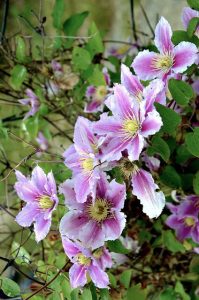
Clematis: These vines make a wonderful flowering vine. They have large purple, white, red, pink, or multiple colored flowers. We have heard many people say that they have had trouble getting clematis to grow. They require well-drained deep soil with an adequate mixture of approximately 10% peat moss mixed in with the existing garden soil 18” deep before planting.
The clematis requires at least ½ day or more of good full sun; however, the roots need to be kept cool. (Plant behind bushes or provide shade over the roots.) Buy only well established clematis plants that have been grown in the pot for at least one year for best results. Most varieties can be pruned in the early spring if necessary, or after flowering. Remove the dead wood.
*Asao-huge rosy-pink flowers with white tones in spring, 6-10’
*Belle of working-long blooming, silvery blue, dbl rosette shaped flowers in spring and fall. 6-9’
*Duchess of Albany- masses of long tubular, bright pink flowers with reddish-pink bars, bloom in summer, 6-10’
*Elsa Spath-large lavender blue flowers accented with red stamens, flowers most of the summer.6-8’.
*Ernest Markham-Brilliant red flowers in summer, 8-16’.
*General Sirkoski-large bluish-purple flowers with a red center in summer, 8-12’.
*Henryi-Profusion of large, pure white flowers, summer, 10-13’.
*Jackmanii-heavy blooming, deep purple flowers, summer, 10-13”.
*John Paul II-large, creamy white flowers, with soft pink stripes and deep red anthers, 8-10’.
*lanug. ‘Candida’-large white flowers throughout summer, 8-10’.
*Nelly Moser-Soft pink with a deeper pink bar down the middle of each sepal, summer, 6-13’.
*Niobe-stunning, very deep, ruby red flowers, summer, 6-8’.
*terniflora(paniculata)- small, sweetly scented creamy white blooms, late summer, 20-30’.
*The President-deep purple flowers with dark purple stamens, summer 8-12’.
*Ville de Lyon-large, rounded, carmine-red sepals fade to silvery pink edged in red and is accented by yellow stamens, 10-13’.
*Margot Kosher-rose-pink twisted flowers,8-10’.
*Polish Spirit-deep purple flowers, summer, 10-12’.
Miniature Rose Care Sheet
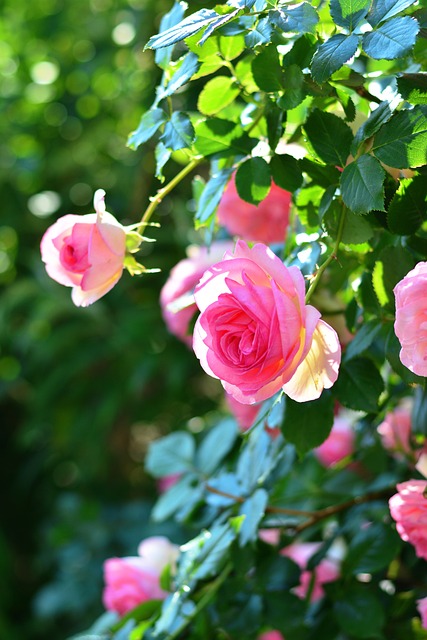
Outdoors:
- Plant miniature roses where they will receive 5 or more hours of sunlight.
- Space plants about one foot apart.
- Use regular garden soil for planting.
- Water well during the growing season.
- Feed each plant one tablespoon of fertilizer in March, June, and July.
- Cut plants back to about 5 inches in the spring.
Indoors:
- Keep plants on a sunny windowsill.
- Place pots in a tray filled with pebbles or sand. Keep the pebbles or sand wet all the time.
- Water plants every two to three days keeping the soil in the pot moist but not soggy.
- Feed with houseplant fertilizer once a month.
- Give the plants an eight-week rest in the hydrator section of the refrigerator during June and July.
- After the rest period, cut plants back to about 3 inches and resume normal care.
Note: Roses need more humidity than modern home heating systems provide. To solve this problem, the pots should be set on the tray of pebbles so that the water evaporating from the tray will raise the humidity around the plants. Yellowing leaves indicates that the air around the plant is too dry.
Printable Miniature Rose Care Sheet
Our Favorites List
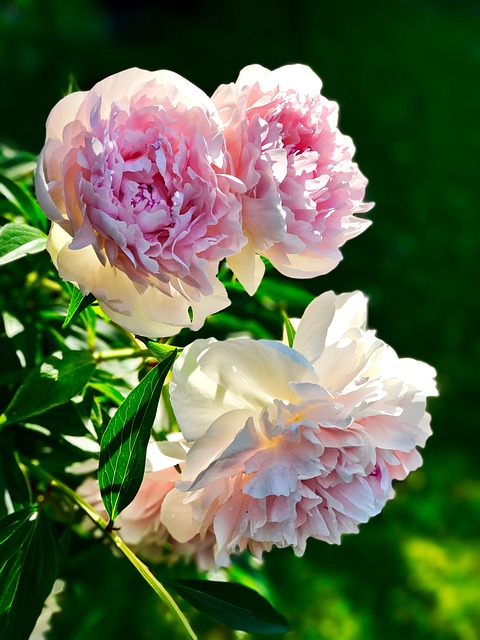
We have chosen these for their hardiness and dependability in our area.
There are many, many other great perennials that do well in our area, also!
- Daylilies (Lots of beautiful colors and varieties)
- Black Eye Susan (Goldstrum is the best variety.)
- Purple Cone Flower (Whites, also, but they can be harder to get started.)
- Shasta Daisy (Tall or dwarf variety)
- Coreopsis (Moonbeam, Zagrib, Rosea, Baby Sun, & others)
- Bee Balm (Monarda) Red lasts the best and attracts hummingbirds.
- Sedum Autumn Joy (and others, likes sunny areas & tolerates dry soil)
- Hostas (Great for shade, colorful, interesting varieties)
- Peonies
- Russian Sage
- Lupine (Self seeds and spreads)
- Oriental Poppy (Needs a well drained location)
- Daffodils (Bloom early in the spring, deer and squirrel won’t eat these)
- Clematis Vine (Roots need Shade and kept cool, top needs sun)
- Trumpet Vine (Very vigorous, hummingbirds love it)
- Blue Pincushion Flower (Scabosia) Blooms almost all summer
- Tall Phlox (Likes a well-drained, sunny location)
- Groundcover, shrub, & miniature roses (Very hardy, choose varieties grown on their own root, not grafted)
- German-Bearded Iris (Very fragrant)
Plants that can withstand shade
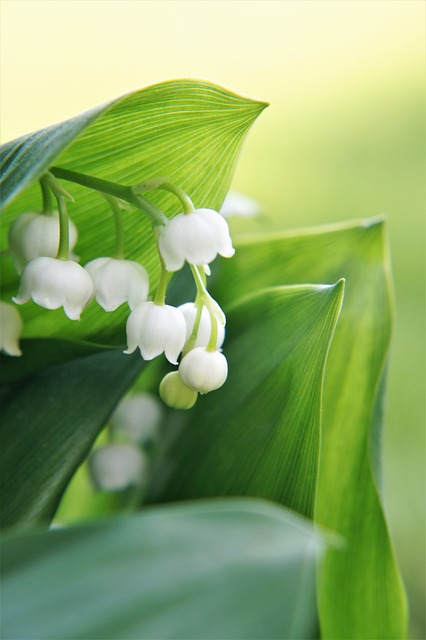
Perennials:
Aegopodium Variegated (Snow on Mountain)
Astilbe
Bleeding Heart (Dicentra)
Climbing Hydrangea Vine
English Thorndale Ivy
Hardy Ferns
Hosta-Many interesting bright colors
Ligularia (needs a very wet location)
Lily-Of-The-Valley
Myrtle
Pachasandra
Primrose
Purple Leaf Winter Creeper (Euonymus)
Trees:
Amelanchier
Dogwood
Magnolia
Red Bud
Shrubs:
Hemlock
Mountain Laurel
Pieris Japonica
Viburnum
Yew
Printable List of Plants that can withstand shade
Poinsettias
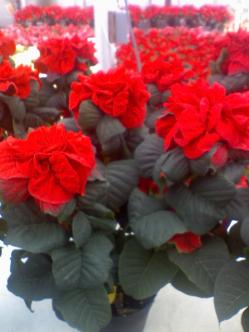
Poinsettias are a beautiful, long lasting winter houseplant.
Just remember to keep the soil moist because they don’t like to dry out. They like to be kept near a light window, too.
Printable Poinsettias Information
Poisonous Plants
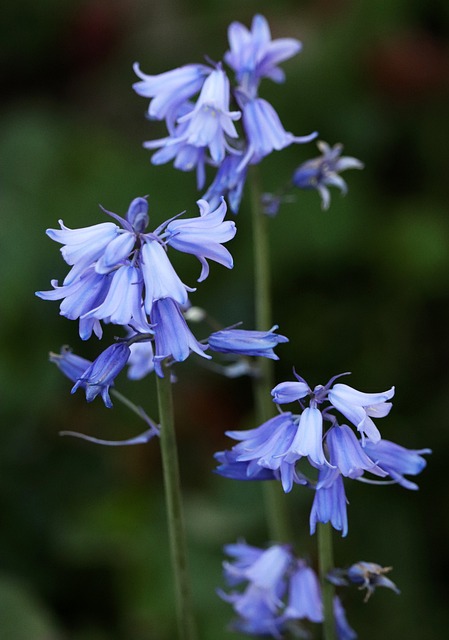
The following plants are considered TOXIC (poisonous, possibly dangerous). These plants contain a wide
variety of poisons and symptoms may vary from mild to fatal. Contact the local Poison Center for more
specific information on these or other plants that may not be on this list. Many other plants not listed here
will cause Dermatitis (skin rash).
Bulbs
| BOTANICAL NAME | COMMON NAME | TOXIC PART |
| Amaryllis | Amaryllis | Bulb |
| Caladium | Caladium | All Parts |
| Colchicum | Autumn Crocus | All Parts |
| Crocus | Crocus | All Parts |
| Galanthus | Snowdrops | All Parts |
| Hyacinthus | Hyacinth | Bulb |
| Narcissus | Daffodil | All Parts |
| Ranunculus | Buttercup | All Parts |
| Scilla | Bluebell | All Parts |
| Tulipa | Tulip | Bulb |
Printable Information on Poisonous Plants
Rhododendron Care
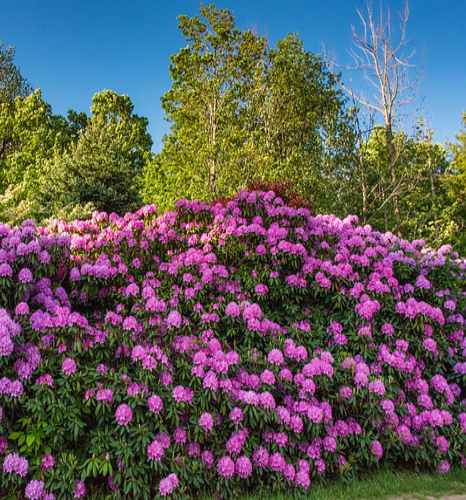
Rhododendrons are one of the most beautiful flowering bushes.
However, they require special care to become established in the landscape.
They are very susceptible to winter injury if they are planted in an exposed location. Rhododendrons do best on the north or east side of a house, protected from the prevailing winter winds and where they get ½ day of shade.
Rhododendrons also require a very well drained soil; they will not tolerate “heavy” or wet soils. To improve a soil, mix in peat moss with the existing soil, at a rate of 1/3 peat moss to 2/3 existing soil. Water the rhododendron once a week approximately for the first two (2) summers. Newly planted rhododendrons prefer Miracle-Gro fertilizer, not Mir-Acid.
The soil can be amended with garden sulfur to keep it acid. We carry gardensulfur in small bags.
Granular fertilizer is the easiest way to fertilize rhododendrons. Use ¼ cup for each 3’ of height of 10-10-10 once a year in the spring. Sprinkle in a 4’- 5’ circle on the soil at base of the shrub, without getting any on the shrub.
Printable Rhododendron Care Sheet
Roses Care Sheet
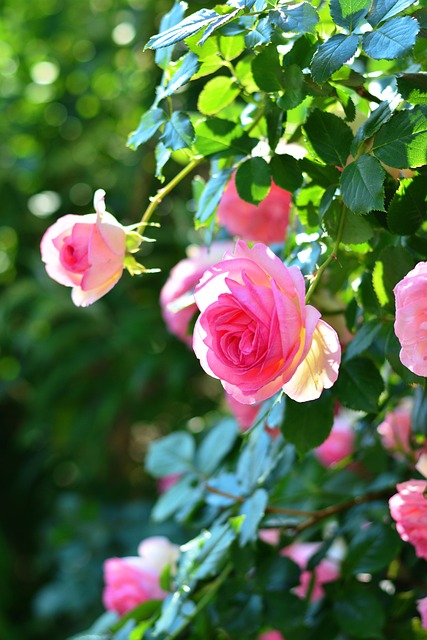
We sell quite a few varieties of roses. They are valuable in the landscape because they flower for much of the summer, right up until the October frosts. They come in many different and beautiful colors and many varieties are very fragrant. Roses need to be in full sun most of the day to do the best. You may need to spray roses for Japanese Beetles in late summer.
There are many varieties of roses that are grafted. The graft is found near the soil line and looks like a round ball, that is where the branches start from. In our cold climate, the grafted roses may freeze out in cold winters. Grafted roses should be planted deeper, so the graft is 1” or 2” below the soil line. This will help protect the graft during the winter.
Other varieties of roses are grown on their own root and are much hardier. Usually shrub roses, miniature roses, and groundcover roses are grown on their own root.
There are six main types of roses. Three types are very hardy and the other three are not. See the winter protection tips at the end of the article for advice on how not to loose your roses over the winter.
Here is a description of each type:
• Climbing Roses – These roses are well suited for climbing on a trellis, against the wall of a building or porch. Many of these are grafted, so it is important to follow the planting instructions described above and the winter care tips below.
• Floribunda Roses – These are roses that produce clusters of flowers, rather than one large flower on each stem. They require the same care as is described above. They are grafted and need special winter care (see the tips below for winter care.)
• Grandiflora Roses (Hybrid tea) – These are the long stem roses people grow to “cut” and bring inside for vases and arrangements. Many times in our area, some of these can “freeze out” and die over the winter (see the tips on the last page for winter care.)
• Groundcover Roses (Hardy) – These roses spread out along the ground making a low “mass of color.” They also are usually grown on their “own root,” which means they are “hardier” and take our cold winters better than grandiflora and floribunda roses. They are a great addition to a sunny part of the garden or a sunny slope because they flower all summer long, right up to the frost. See the winter care tips below.
• Miniature Roses (Hardy) – These are lower growing “bushy” roses. These are also grown on their “own root” which means they are very hardy and take our cold winter very well. See the winter care tips below.
• Shrub Roses (Hardy) – These are “bushy” types of roses and are well suited for our area. They are usually “hardier” and take our cold weather better that grandiflora and floribunda roses. Some of these are grown on their own root, which means they are not grafted and this is what makes them “hardier” and less likely to die out in our cold winters. See the winter care tips below.
Rose winter protection tips:
In mid-November all types of roses should be prepared for the winter. The less hardy types (climbing roses, hybrid tea long-stem roses, and floribunda roses) are likely to freeze out if not protected. However, all types of roses benefit from protection.
Simply take a dense type of mulch and cover the base of the rose and the canes. get the mulch up about 1’ high on the canes, and 2’ wide at the base of the bush. winters the canes will die back from the top to where the mulch starts.
In early-mid April, uncover the bushes and trim leaving only three or four of the strongest canes. Cut the three or four canes back to 10” tall (from the base of the bush) or to where the wood looks green or “alive.” Then fertilize with ¼ cup of 10-10-10 granular fertilizer by sprinkling it on the ground in a 2’ circle around the bush.
Shade Loving Plants
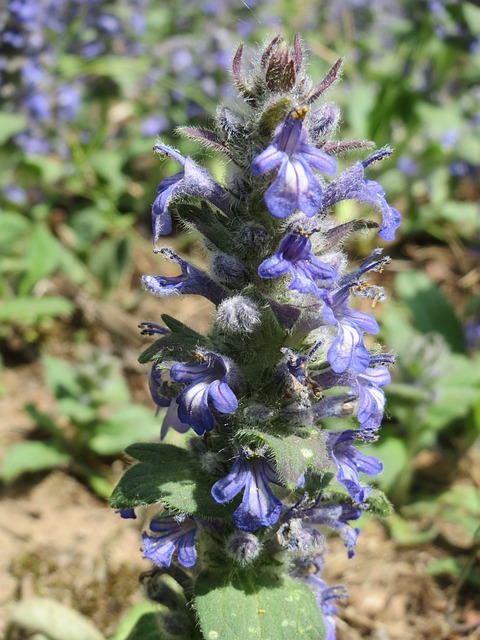
Perennials
Anemone
Barren Strawberry
Bellflower
Bethlehem Sage
Bleeding Heart
Bugleweed
Christmas Fern
Cranesbill
Crocus ‘Jeanne d’Arc’
Crocus ‘Pickwick
Daffodil ‘February Gold’
Daffodil ‘Thalia’
Daylily ‘Stella D’Oro’
Epimedium
Feverfew
Foxglove
Heucherea
Goats Beard
Jacob’s Ladder
Kerria
Lady’s Mantle
Lenten Rose
Lilyturf
Lobelia
Primrose
Sedge
Sweet Cicely
Perennials For Damp Soil
Aconitum
Astilbe
Chelone
Dicentra
Epidemdium
Ligularia
Lysimachia
Polygonatum
Ferns
Wildflower Garden
Black Snakeroot
Bleeding Heart
Bluebells
Columbine
Cranesbill
Creeping Phlox
Foamflower
Honeysuckle
Iris
Jack-in-the-Pulpit
Jacobs’ Ladder
Lady Fern
Maidenhair Fern
Ostrich Fern
Pachysandra
Shooting-Star
Solomon’s Plume
Trout Lily
Wild Blue Phlox
Wild Ginger
Printable List of Shade Loving Plants
Tree & Shrub Planting Checklist
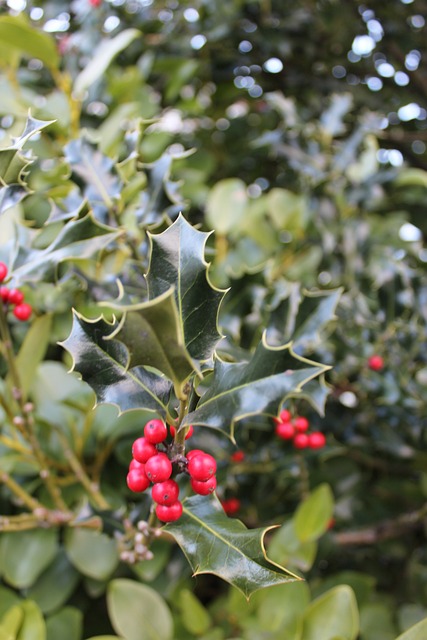
Check List for Tree & Shrub Planting
√ Peat Moss – To loosen up compacted soil.
√ Weed barrier (Landscape fabric) – Ours is professional grade. It works, and it lasts! And, it makes your life easier!!!
√ Mulch – To conserve moisture and add the final touch!
√ Fertilizer – 5-10-5 or 10-10-10 to get the roots growing and rooting in to make a healthy, sturdy plant. Fertilize once a year in the spring with granular fertilizer to keep shrubs healthy.
Printable Tree & Shrub Planting Checklist
Tree & Shrub Planting Guidelines

1. Strip off the sod with a pointed shovel, from the area to be planted.
2. Work up the existing soil, and then add peat moss or manure at the rate of 10-20% peat moss or manure to 90-80% existing soil to a depth of 18”. This will loosen up the compacted soil and allow the roots to get air and water.
3. Plant the shrub/tree at the same depth as the top of the soil ball, make the hole 25% bigger than the soil ball on the shrub or tree to back fill with the peat moss enriched soil. If the roots look very entwined, pull them apart and spread them out.
4. Water the shrub very well to settle the dirt around the roots. Water deeply once a
day for the first week.
5. Water regularly & deeply the first two summers until the roots root into the soil
deeper. Remember, all of the roots are mostly in he root ball the first summer.
The following items need extra attention to watering:
• Trees – Water twice a week or more the first year. Water once a week to 10- days during the second year.
• “Leafy” Shrubs – Barberry, Potentilla, Spirea, etc.
• Large Evergreens – Water twice a week the first year. Water once a week to 10-days during the second year.
6. Fertilize with a granular fertilizer like 5-10-5 or 10-10-10 after planting. Be sure not to get any fertilizer on the plant itself, because fertilizer will burn a plant. Follow our granular fertilizer guidelines.
• ¼ cup for small shrubs
• 1/3 cup for larger shrubs (3-4’ or more)
• ½ cup for trees
Spread the fertilizer out (like salt and pepper) on top of the soil. Never put fertilizer in the planting hole, it will burn the toots. Then as you water the shrub/tree, the fertilizer will gradually leech into the soil. Fertilize all trees and shrubs once a year.
7. Put weed barrier (landscape fabric) down on the soil, cut slits where you can pull the fabric around the base of the shrub/tree.
8. Mulch to a depth of 1-2” on top of the landscape fabric to help conserve moisture.
9. Water…Water…Water.
Keep newly planted shrubs and trees well watered for the first summer.
Printable Tree & Shrub Planting Guidelines
Tree & Shrub Protection
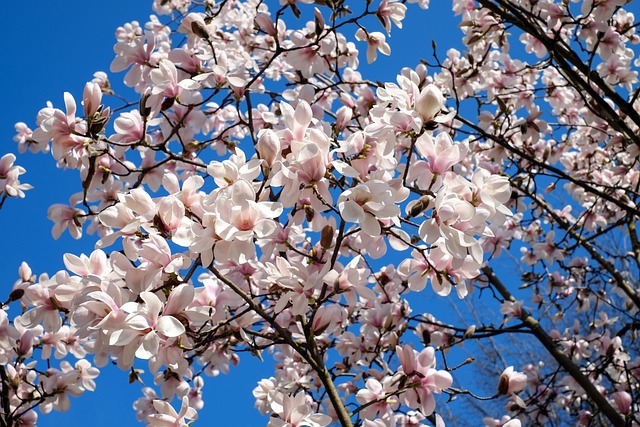
Do to our cold, harsh winters, some trees and shrubs grow best if planted on the North or East side of your house. Following is a list of the trees and shrubs that can’t withstand with winter winds.
Trees:
Dogwood
Japanese Maple
Magnolia
Rose of Sharon
Weeping Alaska Cedar
Shrubs:
All broadleaf evergreens including:
Azaleas Evergreen & Exbury
Boxwood
Euonymus
Exbury Azaleas
Hollys
Mt. Laurel
Pieris
Rhododendrons
Rose of Sharon
Viburnum
Weigelia
Printable Tree & Shrub Protection Guidelines
Trees & Shrubs
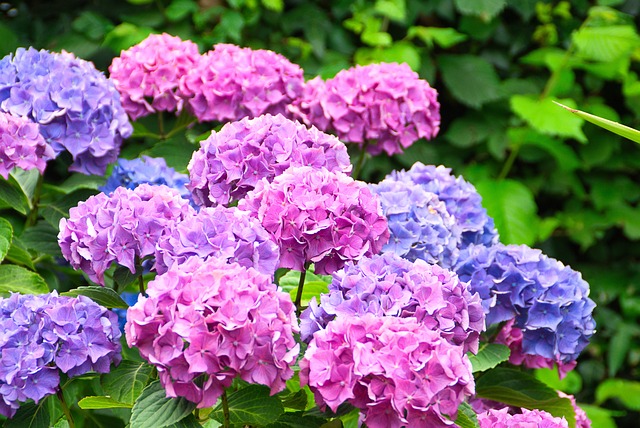
Shrubs
Arborvitae (Thuja) – Arborvitae, or cedar, come in low growing dwarf globe form to pyramidal forms that reach a height of 8-20’ depending on the variety. Arborvitaes are not a good choice where deer can get to them. We carry the following varieties:
• Dwarf Globe Arborvitae (Thuja) – We now carry only dwarf types of globe arborvitae. The dwarf types stay more compact and low er growing. They make a great foundation plant in areas where deer are not a problem. They grow to be 3- 4’ high and 4-5’ wide. They can be trimmed in the summer once a year. They do best in at least ½ day or more of full sun.
• Emerald Pyramidal Arborvitae (Thuja) – This narrow upright variety can grow to 10-15’ tall and 4’ wide. It is a slow growing arborvitae. It can be used for a tall accent plant in foundation plantings or for hedges. This variety is especially attractive for hedges when planted 3-4’ apart. A level, even planting bed will provide an even growing hedge. Avoid excessive wet spots and extremely dry elevated spots. Full sun or at least a half a day of full sun is best. Do not plant where deer could be a problem . If deer are a problem, Juniper hetz columnaris is a good choice for a hedge.
• Nigra Pyramid Arborvitae (Thuja) – Nigra arborvitaes make excellent hedges. It is faster growing than the emerald arborvitae. It grows 20’ or more in height and 4-5’ wide. They like full sun to ½ day full sun. This variety grows too tall to be a foundation plant up against the house. Plant them 4’-5’ apart for a hedge. Do not plant these where deer could be a problem. Nigra is a good straight arborvitae. Juniper hetz columnaris makes a good hedge.
• Rhinegold Arborvitae (Thuja) – This is a rich, deep gold variety of arborvitae. It can get to 3-4’ high and 3-4’ wide if not trimmed. Trim once in the summer to control its size. It prefers full sun to part sun. It isn’t a good choice if deer could be a problem.
• Sunkist Arborvitae (Thuja) – A good choice for a yellow accent plant that contrasts well with greens, blues, and reds in the landscape. This isn’t a good choice if deer could be a problem.
Azalea Evergreen – Evergreen Azaleas require a protected, semi-shade location to do best. Plant these on the North or East side of the house, right up against the foundation. Purple and lavender varieties are usually the hardiest. Protect them from deer. They are 3’x4’at their mature size. Trim in the early summer. They are not super hardy.
Azalea Exbury – These Azaleas have large Rhododendron type flowers. They loose their leaves in the winter so they can tolerate a little more of an exposed side. The flower colors are orange, pink, and yellow. The size can reach 5’x5’ or more. Protect the buds from the deer. Trim in early summer.
Barberry Crimson Pigmy (Berberis) – A dwarf red barberry is 2’ high by 3’ wide. They need full sun for at least ½ day or more to retain their bright red color. Trim once or twice in the summer. They are pest free and very colorful!
Barberry Dwarf Gold (Berberis) – Grows 1 ½’ tall by 2 ½’ wide. They need at least ½ day or more of full sun to retain bright gold color. Trim once a year in the summer. They are pest free and very colorful!
Barberry Rose Glow (Berberis) – A larger growing barberry; can get to 4’ high by 4’ wide. It needs at least ½ day or more of full sun to retain its bright red color. Trim once a year in late summer. They are pest free and very colorful. The new growth is bright pink and leaves are bright red.
Birds Nest Spruce (Picea) – This is a dwarf variety of spruce that is suitable for foundation planting. It can grow to approx. 3’ high and 6’ wide. Plant in sun to part shade. It may be trimmed once a year in mid-summer to keep it contained. It has very pretty light green new growth. This is deer resistant. Little Gem is a “dwarfer” variety.
Boxwood (Buxus) – These are great for low hedges and foundation plantings. They are deer resistant. It is a broad leaf evergreen, so it does best on the North or East side of the house, protected from the winter wind. Trim once during the summer.
Burning Bush Dwarf (Euonymus Alatus) – They can get to be 5’ tall or more if not occasionally trimmed. It is a beautiful green bush in the summer and bright fire red in the fall. They may not turn bright red in the fall if grown in the shade. Trim once or twice a year to keep them contained. Protect the bottom branches from rabbits in severe winters. You can use chicken wire or deer netting. They are very beautiful, hardy, and popular.
Butterfly Bush (Buddleia) – A large attractive flowering bush can get 6’ high. They may die back to the ground in severe winters. Prune back to 18” tall in the early spring
for best results. They will bloom throughout the late summer and attract butterflies. They come in a variety of colors.
Cotoneaster – A low spreading evergreen. They get to be 2’+ high to 5’ wide, they don’t need any trimming, and they are relatively problem free.
Cypress Gold Mop (Chamaecyparis) – A colorful bright gold evergreen. They can be trimmed or given a larger space to let grow. They can be kept at 3’. They need ½ day or more of full sun.
Dwarf Alberta Spruce (Picea) – A conical shaped accent plant suitable for foundation planting. It can be trimmed once a year in mid-summer to keep a “perfect” shape. Without trimming, it could grow to 6-7’ high and 3-4’ wide over time. It is a very popular, slow growing dwarf evergreen. It should be sprayed for spider mites once a year in June as a preventative measure. Mites could cause discolored patches and eventually brown patches in the plant. With proper care, this is one of the most beautiful evergreens. It can tolerate full sun to ½ day of full sun.
Euonymus Variegated (Euonymus) – It is a broad leaf evergreen. The gold variety needs ½ day or more of full sun to do the best. The green and white varieties will grow in partial shade. They provide year round color in foundation planting. Avoid planting in wet areas and only plant in the spring or summer. They grow to be 2 ½’ x 2 ½’. They are very colorful and very popular. Protect them in the winter from the rabbits by using deer netting or chicken wire.
Forsythia (Forsthia) – These are a popular spring flowering bush. We sell varieties thatare suitable to our cold weather climate and flower dependably. They can grow to 8’ high and 10’ or wider. They can be trimmed to shape in the summer. They have yellowflowers in early spring.
Hibiscus, Rose of Sharon, Althea (Hibiscus) – This tree or bush gets quite big. It gets up to 8’ tall for bush form and 12’ tall for tree form. They need to be in a protected spot to do best. In town is better for them than out in the country. Keep it on the North or East side of a house to protect it from prevailing winds in the winter. They need well-drained soil and pruned in early spring. They flower in late summer for a long time.
Holly, Blue (Ilex mes.) – These are popular broad leaf evergreens. The “female” hollies get the berries and the “male” hollies are the pollinators. If you need more that two hollies within the same bed, only get one male because it will pollinate numerous females. Hollies will do best in a protected spot on the North or East side of the house, protected from winter sun and wind. It is best to plant them right up near the foundation of the house.
Hydrangea (Hydrangea arbor Annabell) – A round, bright white flower. This hydrangea does great in this area! The average size for bush form is 3’x3’. It flowers dependably in late summer for a very long period (longer than a month) when few other bushes are flowering. They die back to the ground each winter and breaks dormancy late in the spring. They prefer partial shade but will grow in sun with adequate moisture. They are very beautiful, but underused in our area!
Hydrangea (Hydrangea macro) – Pink or blue – Unfortunately pink and blue hydrangea flowers are set in the fall on last years growth, and most winters in our area the flower buds freeze and the following year it doesn’t get many flowers or none at all. Do not prune these in the fall. We are trying a new variety in 2003 call “All Summer Beauty” which is supposed to flower on the current years’ growth. However, we aren’t sure yet, until it’s out for a few years. The flowers will be pink in alkaline soils and blue in acid soil. Try Hydrangea PG, Tardiva, or Annabelle; these are great for our area!
Hydrangea (Hydrangea Paniculata) – These do great in our area! It needs a spot that has adequate moisture on the ground. PG – These have white, cone-shaped flower that turn pink as they ripen. They are great for drying! Prune back in the fall to get fewer
branches for bigger flowers next year. They are available in bush or tree form. The bush gets 5’X5’ or larger. The tree can get to 12’ tall. They are very hardy and flower in late summer for more than a month! They are not used enough in our area! They need an area with space to grow. They tolerate sun or part shade. Similar varieties are Tardiva, Unique, and Pink Diamond.
Hydrangea (Hydrangea Pan. Tardiva) – A newer variety like PG, only the flowers are snow white, on stronger branches. They are available in bush or tree form. The flowers of this variety are not suitable for drying. This variety does great in our area!
Inkberry (Ilex Glabra) – A broad leaf evergreen that should be planted on the North or East side of the house up next to the foundation. Trim once a year.
Japanese Pieris (Pieris Japonica) – A broad leaf evergreen that has Lily-of-the-Valley type blooms in the early spring. Plant them on the North or East side of the house where it is protected from winter winds. They grow approximately 3’x3’.
Lilac Common, French Lilac (Syringa) – The beautiful flowers and fragrance are the best reason to plant a lilac. The common lilacs grow to a height of 8-15’ and a spread of
approx. 6-10’. The following varieties are the ones we have found are the best, so far. Common lilacs can be trimmed after flowering in the summer.
• Congo – A very deep, dark purple-magenta color.
• Charles Joly – A good grower with magenta flowers that are highly fragrant.
• Mme. Lemorine – A double white flower, a very vigorous grower.
Lilac Dwarf (Syringa)– There are some great new varieties of Dwarf Lilacs. found Miss Kim to be a favorite.
• Miss Kim – This dwarf lilac has a beautiful mound shape and is small enough to use for foundation plantings. It can be trimmed in the summer after flowering to control size. The mature size is 5’x5’. It has lilac colored flowers that are fragrant in late May and early June. Super!
Mountain- Laurel (Kalmia) – A broad leaf evergreen that requires a protected location out of the winter wind. Best suited on the North or East side of the house. They require very well drained soil, high in organic matter. Work in peat moss to a depth of 8” or more at the rate of 1/3 peat moss to 2/3 soil. Mulch with 2” -3” of mulch to retain moisture and keep roots cool. Plant with the top 1” of soil-ball above ground and cover it with mulch 2” -3” deep. It flowers in early summer.
Mugo Pine (Pinus) – This is a dwarf evergreen that is suitable for foundation planting. Deer do not like these! Trim these once a year in the early summer and remove most of that years’ new growth to control size. Plant in sun to part shade. They will get 5’ tall or more if not trimmed yearly.
Ninebark Diablo (physocarpus) – This is a purple leaf shrub that grows 5’ high and 3’ wide. Cut it back to 18”-2’ in early spring for best results. This is a nice looking, newer variety suitable for foundation planting. The purple leaves contrast with yellows, greens, and blues.
Potentilla – These summer flowering shrubs flower for long periods throughout the summer. They come in yellow, white, and pink. They like full sun for a half day or longer. Trim every year in the early spring to 12” -18” tall for best results. They also can be trimmed again in mid-summer after flowering stops. They are very popular flowering shrubs.
Privot Hedge (Ligustrum) – Ibdium privot is best suited to our area. It can grow 8-12’ high, with a spread of up to 4-6’. They make a good hedge plant. Plant 2’ apart for a rapid fill in. Cut the plants back to 8-12” tall when planting to aid in branch development. Plant in full sun to part shade. They do well in dry soil, so avoid wet areas.
Purple Leaf Sandcherry (Prunus) – A popular shrub that grows to 8’ tall to 6’ wide if not trimmed. This can be trimmed once or twice in the summer to keep at 4’ or so. Dark purple foliage makes a good contrast with yellows, greens, and blues in the landscape. Japanese beetles can damage the leaves in late summer, but seldom cause any permanent damage.
Rhododendrons can be very hard to grow if they are in the wrong location . They can be killed by too much wind in the winter. They also need a very well drained soil. Mix approx. 1/3 peat moss with 2/3 existing soil, into soil 12” or more deep before planting. “Build up” the soil a bit so it drains away from the plant. Rhododendrons should not be planted in a “wet” area. They need to be kept “moist” the first two years until they root into the soil. I would suggest watering at least once a week in the summer. Fertilize newly planted rhododendrons once or twice with a Miracle-Gro solution the first year after Planting. Only use Mir-Acid on established rhododendrons. To control the size of the rhododendrons, trim once a year in June after flowering is completed.
• Dwarf Rhododendrons – PJM –These are the “easiest to grow” and the “toughest” of the rhododendrons we sell. They like to be in a “semi-protected” place, out of the winter wind, on the North or East side of the house, preferably. Trim them once a year in the early summer (June) to keep them shapely. They flower earlier in the spring than a regular rhododendron. The flowers are light purple. They can be kept at 3-4’ high and 3-4’wide if trimmed once a year. They make a great foundation plant. Mix 1/3 peat moss with 2/3 existing soil, into soil 12” or more deep before planting, and mulch to keep roots cool and moist. They cannot tolerate “wet soil.”
• Miniature Rhododendrons – Purple Gem and Ramapo are the smallest Rhododendrons. These do best in a protected area, near the foundation of the house on the North or East side, out of the winter winds. They get 18-24” tall and up to 3’ wide. The flowers are purple and they like partial shade.
• Rhododendron Catawba (Rhododendron catawbiense) – These are the common rhododendrons we see with the softball size blooms that come in white, lavender, pink, purple, and red. These are best suited to a spot that is “protected”, out of the
winter winds. On the North or East side of the house is the best place to plant them. A half day of sun is better that full sun or full shade.
Spireas – Spireas are hardy, pest free shrubs that thrive in our area! They flower for long periods of time during the summer. The following is a brief description of the varieties we carry.
• Goldmound Spirea – A bright yellow leaf, mound shaped spirea that has pink flowers in the mid-summer. This variety of spirea needs full sun to retain its bright yellow color. Trim once or twice a year to control size. If it gets too big it can be cut back to a 12” ball and it will re-grow. Mature size is 2 ½’ tall x3 ½’
wide. They are very popular and they add a nice contrast to reds, greens, and blues in the landscape.
• Shirobana Spirea (Spirea shibon) – A green leaf spirea with white, pink, and red flowers all on the same plant. This variety is really nice because it flowers off and on all summer and fall. The mature size is a 3’x3’ mound. Trim once a year in early spring or fall. This is one of the best flowering shrubs! This variety is preferred over the other green leaf spireas because of its extended flowering time and neat shape.
Spreading Juniper – The Juniper family consists of many different varieties of spreading evergreens. Deer “generally” won’t eat junipers. Plant them in a location that gets full sun.
• Blue Chip Juniper – This is one of our favorites, it is planted along our entrance right by the parking lot. It can get to 6’ around and 6’ tall.
• Blue Rug Juniper – This is a very low spreading juniper and gets to 6’ around and 2” tall.
• Blue Star Juniper – This is a low, moundy juniper that doesn’t need sheering or trimming. Approximately 2’x2’ when mature. Plant in full sun.
• Gold Coast Juniper – 3’-4’ high by approx. 6’ wide. This is a green variety with golden yellow new growth. It is a nice hardy plant that will take partial sun.
• Icee Blue Juniper– This is very similar to the blue rug juniper, but it has a slightly more compact habit and has a lighter blue color. Plant in full sun.
• Saybrook Gold Juniper– Grows to 2 ½’ tall by 6’ wide. It is an excellent choice because its bright yellow color contrasts with greens, reds, and blues in the landscape. It is very hardy and needs ½ day or more of full sun. They can be trimmed to control the size.
Upright Juniper
• Green Juniper – These u pright varieties are available by special order.
• Moffat Blue Juniper – This is a good, tall accent plant for foundation planting. They need at least ½ day of full sun to keep their intense blue color. They can be trimmed once a year to control the height and width. The mature size is 10’x3’wide if never trimmed. Deer seldom bother this.
Yew (Taxus) – Yews have been the standard evergreen used for foundation planting for years. If trimmed once (preferably twice) a year they can easily be kept at a controllable size. The yew is not a good choice anywhere where deer can go. Deer can really damage yews in the winter. Yews can be grown in full sun to almost full shade. They make a great evergreen for foundation planting.
• Pyramid Yew (Taxus Capitata) – The pyramid yew is a harder to grow variety than the globe or spreading yew. They need to be planted in deep, well-drained soil. Not in a “wet” area, and not in an area that is “too dry, or elevated.” They do well in sun or shade and make a great evergreen for foundation planting. Trim once or twice a year to maintain its size.
• Spreading Yew, Globe Yew – A hardy form of yew that grows just about anywhere. Trim once (preferably twice) in the summer to maintain size. Does well in sun to shade.
• Upright Yews (Hicks Citation) – These yews grow in a columnar shape. They are good for foundation planting or hedges, low or high. They can be trimmed to maintain size and shape. Trim once or twice a year in the summer.
Viburnum – There are many varieties of viburnum. The following is a description of a few of the better, more popular ones:
• Doublefile Viburnum – They grow to be 8-10’ wide at maturity. Plant in sun to part shade. It is a beautiful, large growing flowering shrub with white flowers all
the way up the horizontal branches that last for 2-3 weeks in late spring. This variety can experience die back in severe winters, not as hardy as other viburnums, but beautiful.
• Fragrant types Viburnum– Korean Spice, Burkwoodi and Juddi – The mature height is 6’ and 8’ wide. Plant in sun to part shade. They have very beautiful white, fragrant flowers. The flowers last 7-10 days in early spring.
• Trilobum Viburnum – Dwarf American cranberry viburnum. A very hardy viburnum with a mature size of 5’x5’. It has white flowers (flat) in late spring. Plant in sun to part shade.
Weigeia – This is a summer flowering shrub with a mature size of 4’x 4’ wide. A beautiful new variety is wine and roses. Wine and roses has a dark purple leaf and a bright pink flower. Weigelas may experience some die back in severe winters. Plant in full sun.
Yucca – Yucca plants are tropical, Southwest looking shrubs with pointy leaves and tall spikes and flowers in the summer. They can be variegated yellow and green or just green. They are hardy and prefer full sun. Avoid planting them in wet areas.
Trees
Birch River (Betula Nigra) – The “Heritage” variety of river birch is by far the best variety as far as vigor, and is known as “the most trouble free birch.” It is resistant to the bronze birch boer that has killed many of the European White Birch the past few years. This birch likes well-drained deep soil, and it will grow well in areas that are wet or flooded for part of the spring. The bark color when the tree is young is a mix of cream, salmon, orange, and grow. The bark also has a “peeling” effect when young. This variety gets to be a “huge” tree over time and should not be planted right up next to a house. The mature height is 40-60’ and it is a medium-fast grower. It makes a great yard tree!
Colorado Blue Spruce (Picea Pungens) – The color ranges from bright blue to green from tree to tree. It is a popular evergreen tree. It may be affected by drought if not in good deep soil. Grows to 60’ tall and 15-20’ wide.
Dogwood (Cornus)– There are two varieties of dogwood, Florida dogwood and kousa dogwood (Cornus Kousa). Both are similar in hardiness. We are located in an area where dogwoods can grow with some protection, and in good deep well-drained soil. Both varieti es can grow to 30’ or taller with equal spread. Florida dogwoods flower in May before the leaves appear. Kousa dogwoods flower in Mid-June. Both are “temperamental” and take special care to get started in our area. Protect the trunks of young tree from rabbits in the winter.
Fat Albert Blue Spruce (Picea Pungens ‘Fat Albert’) – This is a semi-dwarf variety that only grows to 15’ tall. It has a very bright blue color. (We have this variety planted at the house next door.) We can special order these.
Flowering Crabapple (Malus) – Few trees are as pretty as a flowering crabapple in full flower in the spring. Flowering crabapples flower dependably in May each year. They generally stay in flower for 10 days –2 weeks. We carry many newer varieties that are disease resistant and most are bred to have small fruit that does not create a nuisance. The fruit will usually hang on until winter, and be eaten by the birds. We carry dwarf crabapples that are suitable for planting near a house and we also carry standard crabapples that generally grow to 20-25’ tall and 20-25’ wide at maturity. We carry white, pink, red, and purple shades. They make a great ornamental tree. Protect the trunks of young trees from the rabbits until the tree gets older and the trunk gets woody. Young trees may also need to be protected from deer feeding on the tree branches
Flowering Pear (Pyrus)– This is a nice shaped ornamental or shade tree. It grows to 35’ tall and 20’ wide. It has white flowers (no fruit) in the early spring followed by glossy green leaves. This is beautiful! Chanticleer and Cleveland select are the varieties best suited for our area.
Globe Blue Spruce (Picea) – A very blue, dwarf selection that grows to only 3’ high by 3’ wide. We can special order these.
Hydrangea Tree (PG or Tardiva) – White cone shaped flowers are produced on a small tree that grows no more that 15’ tall x 15’ wide. It is very hardy and does best in well-drained deep soil when moisture is adequate. It blooms in late summer for approximately one month! Plant in sun or part-shade. The PG variety has flowers that are valuable for drying. They start out white and turn pink with age. In the fall cut them back to produce larger flowers the next year. The tardiva variety has pure white, cone shaped flowers on stronger branches. They bloom for a long period in the summer. They are also available as a bush.
Maples (Acer)
• Japanese Bloodgood Maple (Acer Palmatum) – This is known to be probably the most cold hardy of the Japanese red maples. It can grow to approximately 15’x15’, but it can be trimmed to control size. Follow cultural directions listed above under Japanese maples. The bloodgood Japanese maples we stock are container grown and have well developed root systems. Be sure to water them often, and deeply for the first 2-3 summers until the roots become established in the surrounding soil.
• Japanese Maple (Acer Palmatum)– These make beautiful ornamental trees. Unfortunately, in our area they need a “protected” area in order to grow. They need to be planted in a location where they are protected from winter winds and
late spring frosts. Generally, they will do better in our area in an urban area (city or village) rather than out in the country . They are best planted on the North or East side of a house to protect them from the winter winds. They grow best in light shade. If they are in full sun they will need to be watered in the summer months for 3 years or more until they have been established. Japanese maples do the best in deep, well-drained soil. Mix peat moss 18-24” deep into the soil at the rate of 25% peat moss to 75% existing soil before planting. If they get planted in the right location and get proper care, they can grow in our area. We stock the bloodgood variety, as it is known to be the hardiest variety of Japanese maples.
• The dissectum form of Japanese Maples (Acer) – These are smaller growing types with a finer leaf, and a more moundy habit than the bloodgood maple described above. These are considered “less cold hardy” but can grow in our area in a well-protected area. We do not usually stock this type, due to them being less cold hardy. We can special order them. Inaba Shidare, or red scarlet, is considered the most cold hardy of the dissectum Japanese maples.
• Crimson King Norway Maple (Acer Platanoides) – A maple with maroon leaves all year long. It is considered to have a “medium” growth rate, not too fast and not too slow. It is a sturdy maple that will hold up well as it matures. It is a very
popular and hardy tree that likes to be planted in full sun. The mature size is 40’x40’ in approximately 30-years. Great color!
• Maple Drummondi, “Variegated Maple” (Acer Platanoides) – This is a green leaf maple with the leaves outlined in white around the edge and it is a very pretty, but different variety. Its mature size is 40’x40’in about approximately 30- years. It is very hardy and sturdy.
• “Princeton Gold” Norway Maple (Acer Platanoides)– The leaves emerge bright yellow in early summer, then appear m ore yellow-green in the later summer. Its mature size is 40’x40’ in approximately 30-years.
• Red Sunset Maple (Acer Rubrum )– These maples grow at a faster rate than the Norway maples (crimson king, etc.) This variety has green leaves all summer long, and in the fall they turn a bright orange-red. These maples are highly recommended, they are fast growing, and sturdy.
• Royal Red Norway Maple (Acer Platanoides) – This is another maroon leaf maple. It is very similar to the crimson king. It is said to be slightly faster growing, and the leaf has a “reddish maroon” cast. It is hard to tell apart from the crimson king unless they are side-by-side. It is very hardy and sturdy as it matures to 40’x40’ in approximately 30-years. Plant it in full sun. Great color!
Purple Weeping Beech (Fagus Beech)– We are carrying Beech ‘Purpurea Pendula’ a broad weeping form that doesn’t grow larger than 10’. Other varieties are available. They are hardy for this area.
Sandcherry (Prunus x Cistena) – This is a purple leaf shrub or ornamental tree. The tree form will be approximately 10-12’ high with up to an 8’ spread. They make a pretty, bright ornamental tree. Plant in full sun. Protect the trunks of young trees from rabbits in the winter until the trunk gets woody.
Saucer Magnolia (Magnolia x soulangiana) – Unfortunately, in our area these require a somewhat protected location. Plant in deep well-drained soil and amend with peat moss. Mix 25% peat moss with 75% existing soil. Plant in full sun and avoid frost pockets, because for many years the flower buds could be killed by late spring frosts and freezes. New varieties are later blooming making them less susceptible to frost. Plant in an area out of the prevailing winds; a North or East exposure is best. They produce beautiful 5- 10” white flowers with pink and purple edges. We carry the variety “Betty,” which is a new, later blooming variety with darker purple flowers. Protect the trunks of young trees from rabbits in the winter.
Star Magnolia (Magnolia Stellata) – This is similar to the saucer magnolia; however, the blooms are slightly larger than the blooms on the saucer magnolia. This may save the flowers from being killed by late spring frosts some years. The flowers are 3-5” in diameter and are white. Follow the site and planting instructions above for the saucer magnolia. Protect the trunks of young trees from rabbits in the winter.
Weeping Alaska Cedar (Chamaecypress) – This is a hardy evergreen tree that can grow to 50’ or taller. It is beautiful as a specimen tree. Plant in full sun. Does best in an area that is not exposed to winter wind.
Weeping Cherry (Prunus) – Pink – The pink weeping cherry can grow quite large, 20’ or taller with an equal spread. They are best suited planted away from the house, about 12-15’ or farther. In cold springs it may not have flowers. Protect trunks of young trees from rabbits in the winter.
Weeping Cherry Snowfountains (Prunus)– White – This is a dwarf variety of weeping cherry that stays smaller and more compact. This variety is suitable for planting closer to
a house. It will get to be approximately 8’ tall and up to 12’ around over time. Plant at least 8’ away from a house. The white flowers are dependable every spring. This is a stronger and hardier tree than the pink weeping cherry. We highly recommend this tree for our area. Protect the trunk of young trees from rabbits in the winter until the trunk
becomes woody.
Weeping Larch (Larix) – A small weeping deciduous ornamental tree. Likes a sunny location and deep well-drained soil with adequate moisture. Cannot tolerate shade or
extremely dry soils. Not recommended for raised beds. Water the first few summers until they are well established. They are beautiful and hardy.
Weeping Mulberry (Morus) – This is a great small ornamental tree. It grows approximately to 8‘ tall and can get almost as wide. It is prized for its large, glossy green leaves in the summer and its interesting weeping effect in the winter. It is almost problem free. Trim back in early spring each year, pruning out any weak or dead branches.
Printable Trees & Shrubs with Indexes
